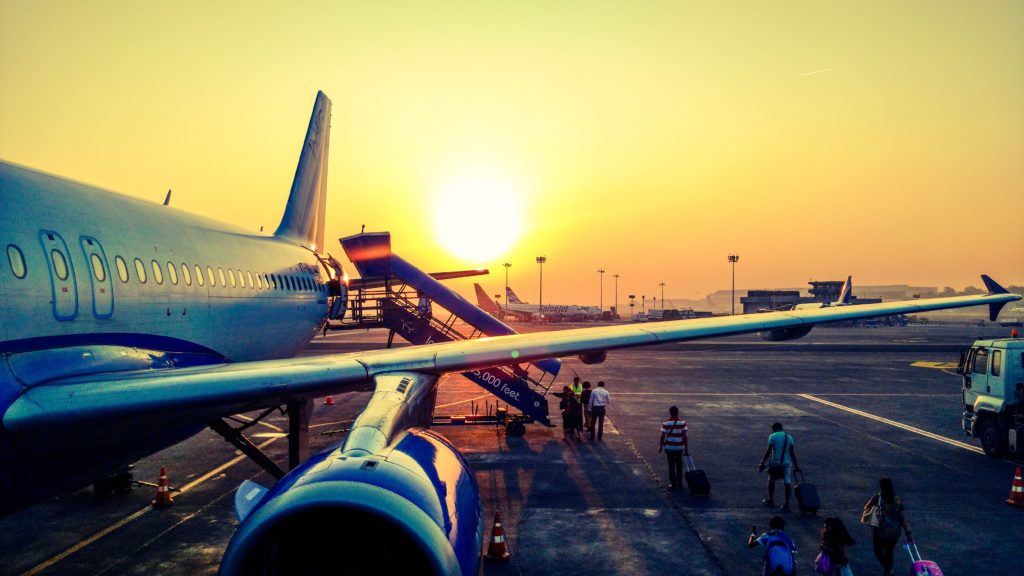Airlines have undergone digital transformation however to meet consumer needs they must continue with digital evolution
Digital evolution
Nowadays, it is obvious that every company must be visible on the web and airlines are no exception to this rule. Clients want more than just a website – users dislike spending a lot of time on unnecessary processes. For example, cart abandonment was rife before Ryanair redesigned their website. Before the redesign, it took 17 clicks for clients to reach the final payment page of their cart. Just as with all buying experiences, customers want to see the relevant content that interests them, but they also want to have all the services connected, and have a quick and seamless experience, in as few clicks as possible. These are the real challenges for companies that offer their services on the internet.
Then challenges above, combined with the rapid growth of revenue generated by Ancillary services, means Airlines must invest in their digital ecosystem to meet clients’ needs.
Two key factors determine how advanced an airline is in cyberspace: Adoption and use of eCommerce.
Michael Hanke – Airline E-commerce
Ancillary services
Sales of tickets only generate one part of airline revenue. Ancillary services are becoming increasingly important for customers, and progressively generate more money for companies.
The above table presents the percentage of the airlines’ total revenue that was generated by ancillary services. In a period of 5 years, revenue grew, on average, by 12.4 %. In 2019 ancillaries were stated to account for approximately 16% of total revenues. Currently, a typical set of ancillary services contains the following:
- À la carte features (onboard sales of food and beverages, checked baggage, assigning seats, call centre support for reservations, priority boarding)
- Commission-based products (airline’s website, duty-free and on-board sales of consumer products)
- Frequent flyer programs
- Airline-sold advertising (in-flight magazines, advertising on the aircraft/in lounges, fare of Product Bundle, early boarding, extra legroom seating)
To take Ryanair as a key example, in the financial year of 2018 (1st April 2017 – 31st March 2018). Their digital evolution has helped them drive sales in a variety of additional and ancillary services.
Ancillaries now deliver 28% of revenue and we are well on track to achieve our 5-year goal of 30%. More guests are switching to our great value “plus” fares, reserved seating, priority boarding, and car hire. Ryanair Rooms penetration is rising steadily, albeit from a low base, as our guests recognise our unique combination of lowest hotel prices and travel credits.
Ryanair ancillary services revenues rose in the last fiscal year by 13%, to a total of €2,017.0M, due to 9% traffic growth, and therefore, a higher uptake of add-ons and ancillary purchases.
Digital Presence
Digital presence is measured using a scale called DAS – Digital Airline Score, which takes into account many different factors, including digital performance, digital presence, e-sales and data protection.
As an example, AirAsia has 110 DAS points, which places them in a group called “Transitional E-co Carrier”. Transitional eCommerce carriers have a solid and experienced handle on e-commerce. Its adoption and use are competitively above average and constantly expanding. eCommerce plays a significant role in all aspects of such an airline business.
eCommerce
When it comes to eCommerce, customer needs have grown over the years. It is no longer just about tickets. Passengers also have an interest in online shopping before travelling, and even during flights. Modern eCommerce is now the norm, so the limitations of the classical ‘duty-free trolley’ are a distant memory for consumers. eCommerce provides flexibility and offers features like personalised offers, which are not available to consumers who rely only on the classic approach to additional sales.
We use our shop platform, which is on our website, to allow passengers to pre-book at least 24 hours before their flight and collect their product on board. OURSHOP is not only catered for pre-booking, but the idea is also for the passengers to use it on their end journey. The OURSHOP team is also engaging with all retailers so that passengers can collect at airports as well.
Elina Jamaluddin, AirAsia
An eCommerce platform can be successfully introduced to address a whole variety of clients’ needs, including:
- Commission based, duty-free products
- Onboard sales of food and beverages
- Advertising on aircraft/in lounges
Since a variety of information has already been collected during the ticket purchase process, the offer presented to the given passenger can be highly targeted.
Passengers may use the eCommerce platform before the flight and collect their products at the airport, or on the aircraft. It can also be used during in-flight to replace the trolley if the given aircraft offers WiFi connection.
Summary
eCommerce is now an integral part of the airline business and it is not only related to the process of selling tickets. The increasing share of ancillary services and the natural evolution of customers’ habits, put pressure on the airlines to meet the needs by introducing more and more sophisticated eCommerce solutions. We are more than happy to help you with that challenge.




